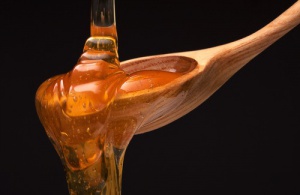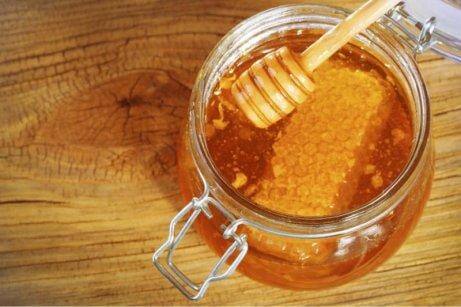How to Tell if Your Honey is Pure or Adulterated

Honey is well-known for its positive health benefits due to its high mineral and vitamin contents. Unfortunately, not all the honey sold at supermarkets is pure. This food is often adulterated, meaning it’s mixed with glucose solutions or low-quality honey with high water contents because the honey has been taken from cells that are not properly covered with wax. Here are a few simple tests you can do at home to check if your honey is pure or adulterated.
Read the label

The first thing you should do before buying a jar of honey is read the label. In addition, check that the ingredient list doesn’t contain “high-fructose corn syrup” or commercial glucose. Manufacturers use these two additives frequently to “stretch” this food and keep it from solidifying.
Solidification of the honey
All honey is liquid, but with time it tends to solidify or “crystallize” into a substance resembling grains of sugar. If you buy a jar of honey that’s already crystallized, it’s pure. If your honey is liquid, you can wait a few days to see if it solidifies or put it in the fridge to accelerate the process. If the honey never crystallizes, there’s a high probability that it’s adulterated honey.
Discover: How Much Sugar Does Your Food Contain? Learn How to Replace Sugar
Tricks to help you know if your honey is pure

Here are some easy tricks to help you check if the honey you bought is pure or adulterated:
- Take a tablespoon of honey and put it in a glass of water. If the honey dissolves, then it isn’t pure. Pure honey shouldn’t disintegrate when submerged in water.
- Take a bit of it and mix it with water. Then, place four or five drops of vinegar into the solution. If it turns foamy, the honey might have been adulterated with gypsum.
- Scoop a bit of honey into a spoon and let it fall from the spoon. Honey with high water contents will fall quickly. Good-quality honey will stay on the spoon or fall very slowly.
- Light a match and try to burn some of the honey. If it burns, then it’s pure. Impure or low-quality honey often contains extra water that keeps it from burning.
- If you have iodine at home, take some honey, mix it with water, and add a few drops of iodine. If the solution turns blue, then the honey was adulterated with some sort of starch or flour.
- Take a small piece of old, hard bread and submerge it in the honey. If the bread is still hard 10 minutes later, the honey is pure. If there’s a lot of water in the honey, the bread will soften.
As you can see, these simple tests will help you confirm the quality of the honey you buy. You should choose the purest, highest-quality honey to help you reap the maximum benefits of including it in your diet.
This text is provided for informational purposes only and does not replace consultation with a professional. If in doubt, consult your specialist.








